Cholera kills a child
in just a few hours
KAPOETA SOUTH SUDAN, JUNE 2017
The realisation hit half-way through working on this text: My words are not enough.
To the right:
There is smoke rising from a pit in the ground, thick smoke that echoes the colours of the storm clouds drawing in from Kenya, bringing a vain hope of rain. The parched land and its people are crying out for water and coolness. But once again the storm lingers over there, mocking.
The earth cracks in the heat.
The fire and smoke are coming from old clothes. Garments so contaminated that they cannot be disinfected with bleach. Gloved hands constantly dump new stinking rags onto the pyre.
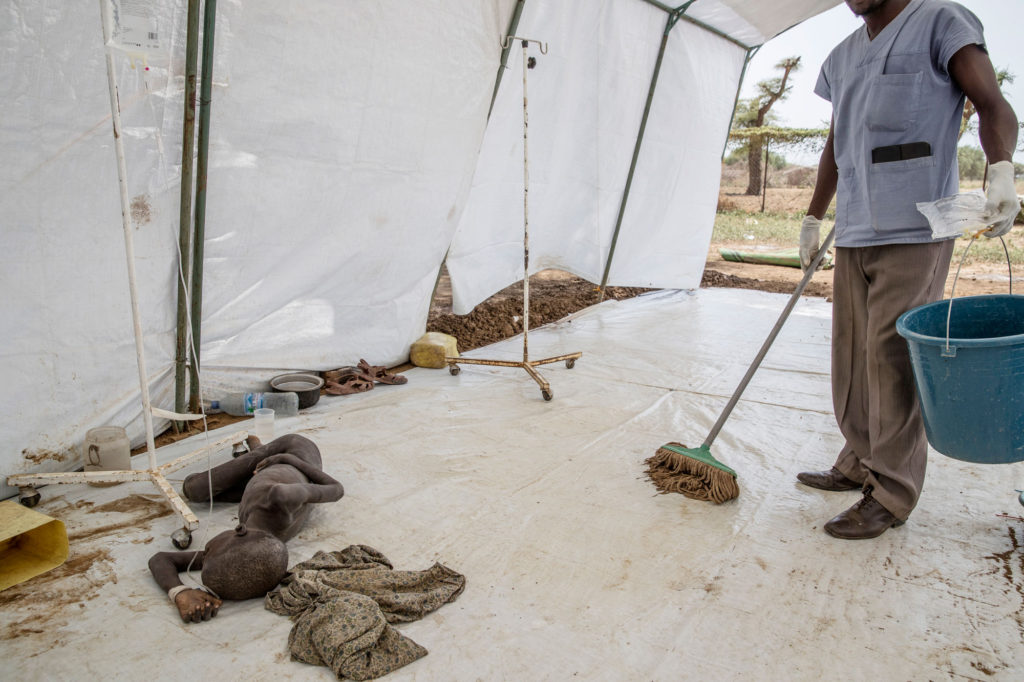

To the left:
To one side of the smoke, in an area the size of a tennis court, people are lying on the ground.
It is here that language stumbles and becomes incapable of fully describing the scene. Like trying to talk about someone else’s nightmare.
Elongated shapes of unusable muscle, where life and death battle for supremacy.
Movements so slow they seem to draw out every second.
In a tent that was once white, drip stands are all lined up. Under them lie even more, even sicker people.
No children’s cries, just weak moans that are drowned out by the buzz of insects.
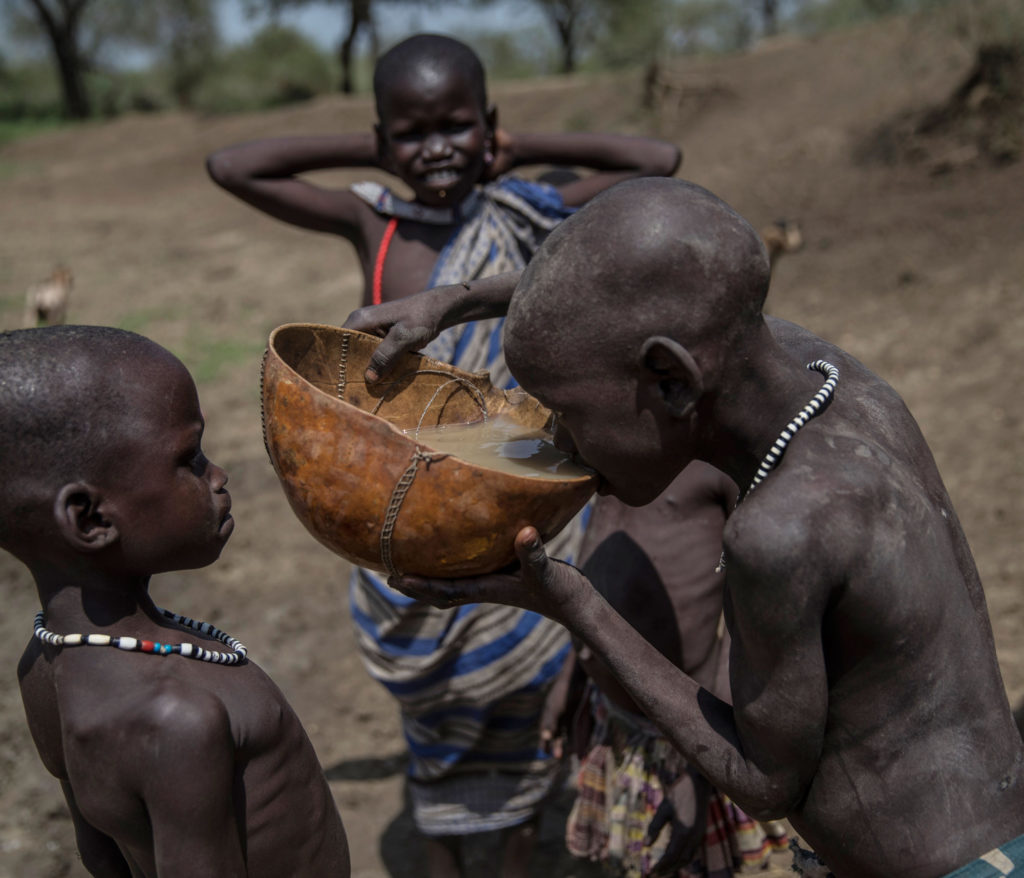

A girl, Sana, is severely malnourished and now cholera is draining her body of its last vitality. Her mother and father hold her under the arms as she receives a few millilitres of rehydration fluid through a syringe. For a minute it looks like she might get to keep the drops of life-giving elixir. Then she vomits.
“She has been practically unconscious for two days now. Her condition is worsening, we are not sure whether she is going to make it,” says Emmanuel Kenyi from Save the Children, after a brief talk with the parents.
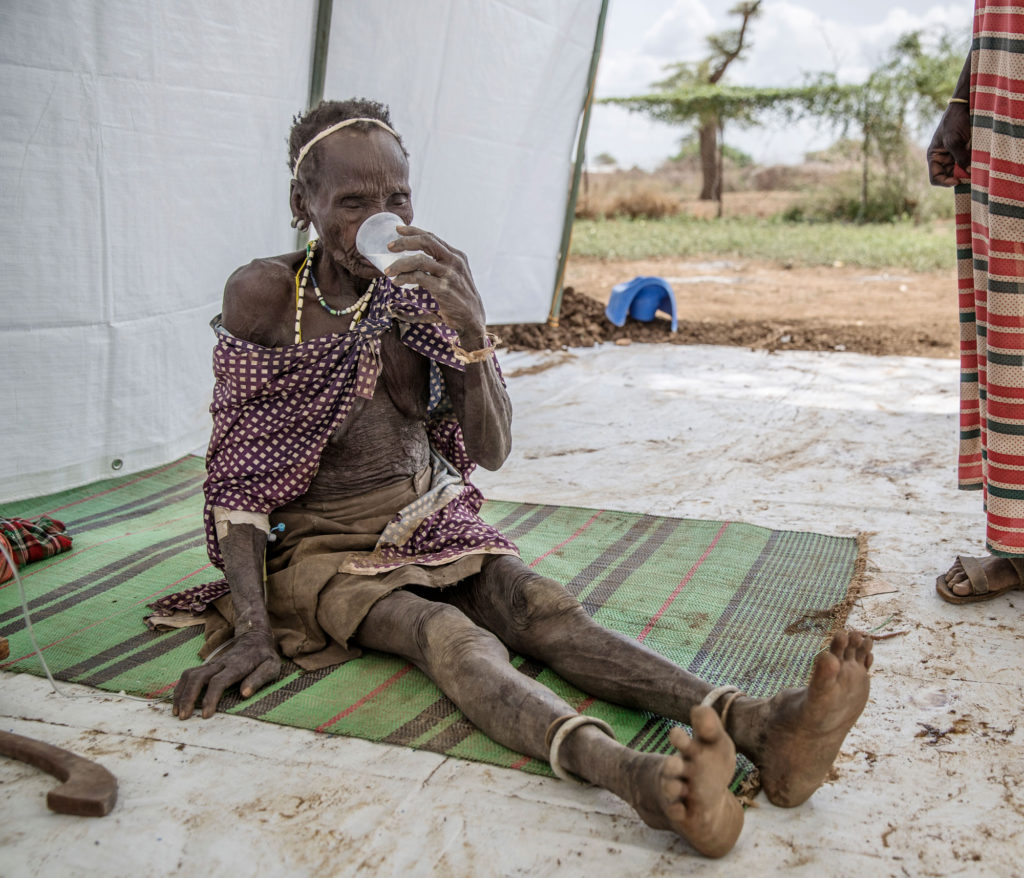

The cholera outbreak in south-eastern South Sudan began in April, exploded in May and is still not under control. This centre in Kapoeta North receives between five and 20 fatally ill people a day. Most have been carried here from remote villages by relatives who are just waiting to be infected themselves.
The speed of death has a measure here. One litre an hour as life drains from the body.
That is what cholera does: kills through the body’s orifices. At the height of its power, the disease will end a child’s life in a few hours if left untreated.
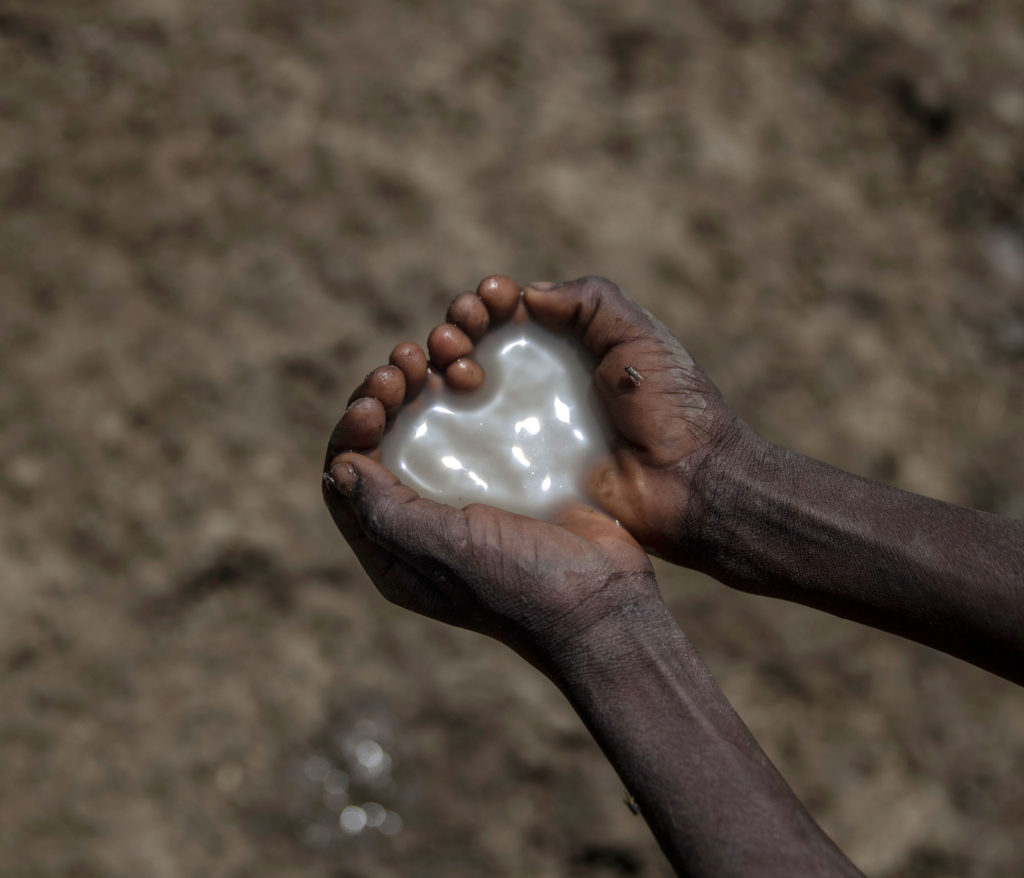

Save the Children’s personnel work in 12-hour shifts without a break. Although the clinic lacks practically everything associated with modern health care, they manage to save many of the patients, but there is a constant stream of new ones and no-one knows how many never make it this far. South Sudan is a country with no real road network.
The medically trained staff set up the drips, take samples and replenish fluids. Others wash blue plastic potties and bleach the pools of faeces that are constantly being generated. Not for a second do looks of disgust or distaste cross their faces. Nor do any of them show any fear of being infected themselves, despite many of them lacking either protective equipment or cholera vaccinations.
Here, as in the rest of the world, health care staff are the standard bearers for humanity.
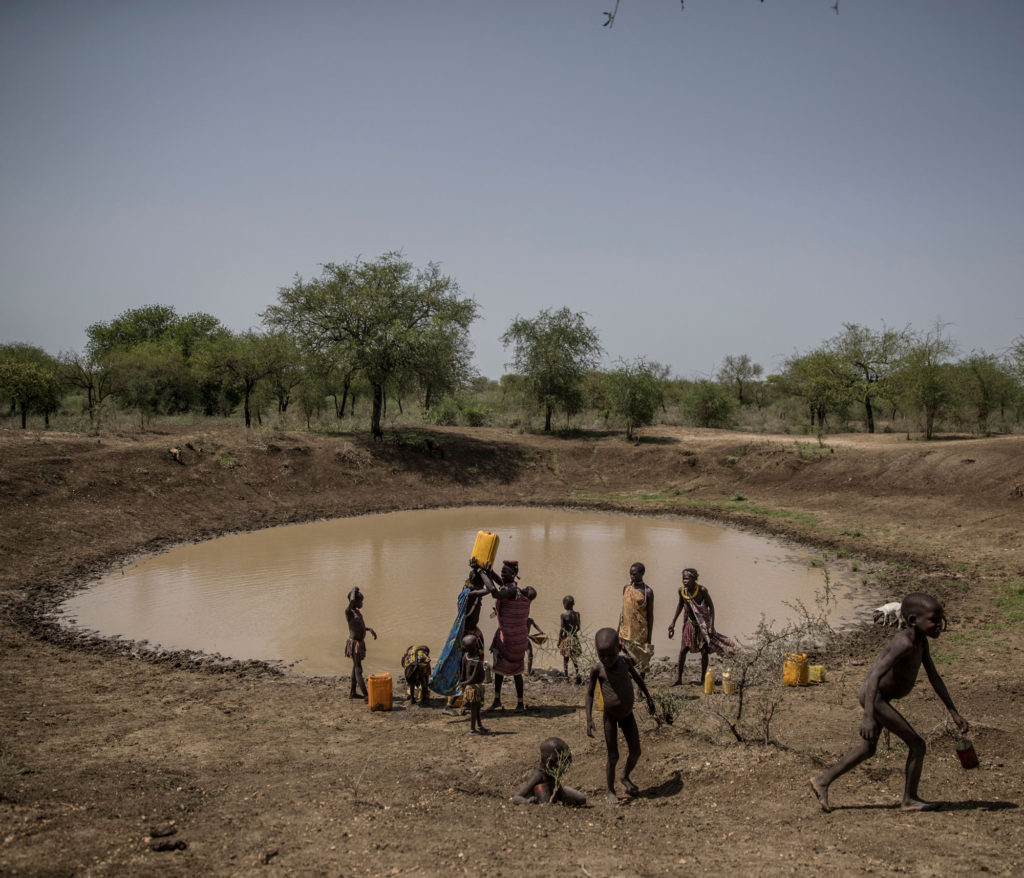

20 kilometres away there is a round hole in the ground. It is almost like a crater from a meteorite, but human hands dug up the earth in this dusty landscape.
At least five metres deep.
At the bottom floats a still, brown, thick liquid that every day evaporates in a quivering stench of animal droppings.
The surface breaks when a girl climbs down. Legs like sticks sink down into the clay. Only her shadow can be seen, no reflection, as she pushes down a dirty plastic bottle.
She puts it to her mouth and drinks.
A voice should be shouting at her to stop. A mother, someone.
So we think. We who always have a glass of water 30 seconds away.
Without that little bit of liquid, the girl would die of dehydration. But when she drinks, she runs a major risk of contracting cholera or some other equally serious disease.
In a normal year, new rainwater refills the well so quickly that it keeps diseases away, but not this year, which is hotter and drier than ever before.
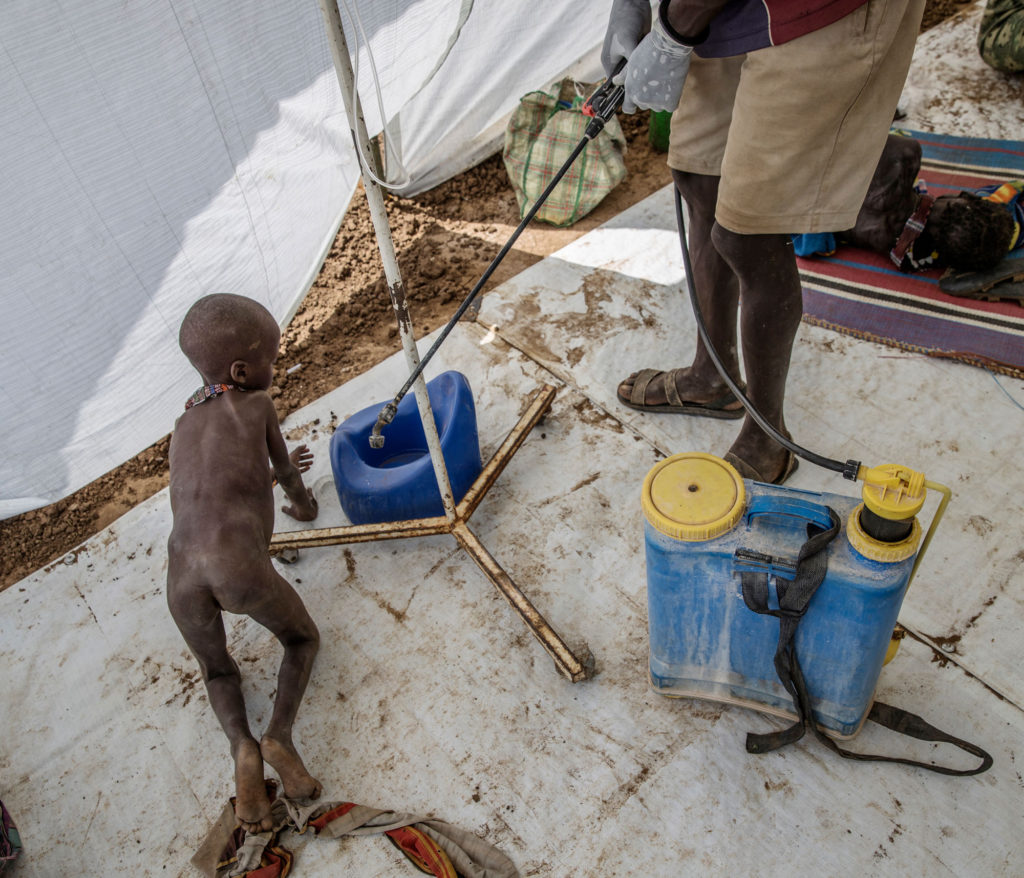

We never speak to Joluo Lokou.
In a log book we read his name and his age, plus:
“Severely malnourished on arrival”
“Cholera confirmed”
No words come from his mouth.
We never get to know what he liked doing before he became ill, or what dreams he had. There is nothing written down about his previous days in life, just a few scribbled lines in my notebook on this day when death came to claim him:
“A 10 year-old boy on a plastic groundsheet. Lying on his side, eyes wide open. Staff swab the ground around him. Next to him, a woman vomits blood into a bucket.”
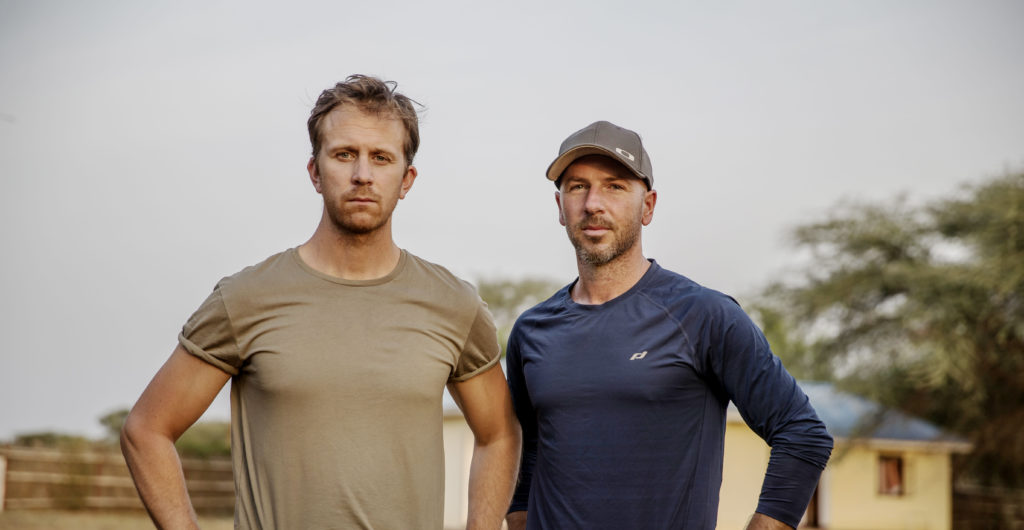

HELP US TO HELP
Every day, more children are becoming dangerously malnourished
and they need your help right now.
Swish your donation to 902 0033
Together we can save children’s lives. Thank you.

